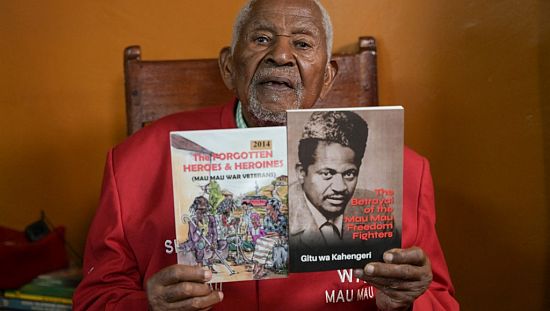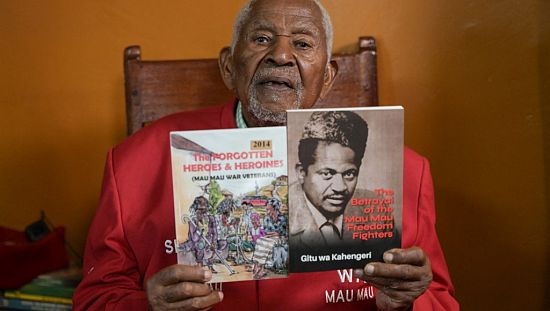In a concerning report, it has been revealed that the wild lion population is rapidly decreasing, with 90% of lions disappearing from their historical habitats. The lions of Kenya’s national parks are particularly affected, as they face the challenges of diminishing ecosystems, human-wildlife conflict, wildfires, and climate change. The killing of 10 lions in just one week highlights the increase in human-wildlife conflict in Kenya. In some areas, lions and humans are competing for resources, leading to economic losses, threats to human life, and conservation challenges. The building of infrastructure has further compounded the problem, as farmers resort to drastic measures to protect their herds from predators. Conservationists warn that if these trends continue, the future of lions looks grim.
The Decline of the Wild Lion Population
Wild lions in Kenya are facing a serious decline in population, which is a cause for concern for conservationists and wildlife enthusiasts alike. The current state of wild lions in Kenya is not promising, with negative interactions and conflicts with humans, loss of habitat and territory, and impacts from drought and wildfires. It is crucial to address these challenges and find long-term solutions to ensure the survival of wild lions for future generations.

The Current State of Wild Lions in Kenya
Kenya is home to a significant population of wild lions, but their numbers are rapidly decreasing. Human-wildlife conflict in national parks is a major issue, as the overlap of lion populations and human settlements often leads to negative interactions and conflicts. This not only poses a threat to the lives of humans and lions but also causes economic losses and conservation challenges. Additionally, the development of infrastructure has further worsened the problem, as farmers take drastic measures to protect their herds from predators.
Negative Interactions and Conflicts with Humans
The coexistence of lions and humans in Kenya is increasingly challenging due to the overlap of lion populations and human settlements. Livestock grazing often leads to economic losses for farmers, as lions prey on their livestock. In response, farmers resort to drastic measures such as spearing and the use of potent pesticides to kill lions, further escalating the conflict. Infrastructure development has also contributed to increased conflicts, as it disrupts lion habitats and forces them into closer proximity to human settlements.
Loss of Habitat and Territory
Historically, lions had vast habitats across Africa, but their territories have significantly diminished over time. In Kenya alone, lions have lost 90% of their territories. This loss of habitat is primarily attributed to population growth and increased land use by humans. Unfortunately, 26 African countries have already witnessed the extinction of lions due to the lack of available game and the increasing human population’s demands for land and resources.
Impact of Drought on Lion Prey
Drought is a natural disaster that directly affects the prey species of lions. In Kenya, a recent drought marked the worst in 40 years, resulting in minimal rainfall and the deaths of thousands of wildlife in ecosystems such as Amboseli. The loss of grasslands during the drought diminished the prey species, forcing lions to turn their attention to livestock. This shift in food source leads to conflicts with local communities.
Wildfires and Rangeland Loss
Wildfires play a significant role in the loss of valuable rangelands and the decline of wildlife populations. The Tsavo ecosystem in Kenya experienced wildfires in 2020, causing the loss of wildlife and their habitats. This loss of rangelands affects the availability of suitable habitats and food sources for lions and other wildlife species.
Long-Term Solutions for Habitat Loss
To address the long-term impacts of habitat loss, sustainable management practices need to be implemented. It is essential to involve local communities in conservation efforts and promote coexistence between humans and lions. By sharing the benefits that come from ecosystems like Amboseli and Tsavo with adjacent communities, there will be incentives for conserving rare species like lions.
Embracing Community Involvement in Conservation
Incorporating community perspectives is crucial for successful conservation efforts. Research on environmental governance has emphasized the importance of involving local communities in decision-making processes. It is also essential to provide incentives for conservation efforts, such as economic or educational benefits. Collaborative approaches that involve communities, organizations, and governments can create a more sustainable and effective conservation strategy.
The Alarming Statistics of Wild Lion Decline
The decline of wild lion populations is a cause for concern worldwide. As of now, there may be as few as 23,000 wild lions left, with lions disappearing from over 90% of their historical habitats. The impact of human activities and climate change has contributed to this decline, and if conservation efforts are not intensified, future generations may never have the opportunity to witness these majestic creatures in the wild.
Potential Impacts on Future Generations
If the current trend of wild lion decline continues, future generations may only be able to see lions in pictures or books. This loss of biodiversity would have significant ecological and cultural impacts, as lions are not only charismatic species but also play a crucial role in maintaining the balance of ecosystems. It is our responsibility to ensure the conservation of wild lions and protect their habitats for the generations to come.
Calls for Conservation Efforts
The decline of the wild lion population in Kenya and other parts of Africa calls for urgent conservation efforts. Collaborative efforts between governments, nonprofit organizations, and local communities are crucial in preserving wild lion populations. Initiatives such as sustainable management practices, habitat restoration, and education programs are necessary to address the challenges of habitat loss, human-wildlife conflict, and climate change. International support and partnerships can also play a vital role in funding and implementing effective conservation strategies.
It is imperative that we take immediate action to protect and preserve the wild lion population. Through community involvement, sustainable management practices, and collaborative efforts, we can ensure the survival of these magnificent creatures and maintain the integrity of our ecosystems. The future of wild lions depends on the conservation efforts we make today.

